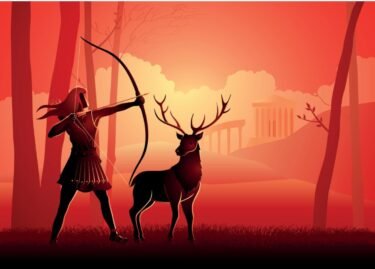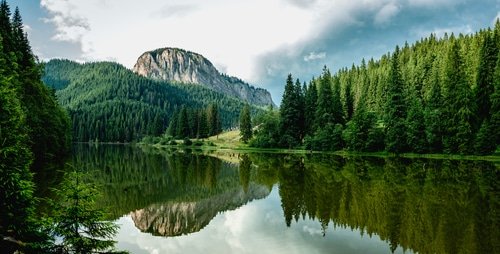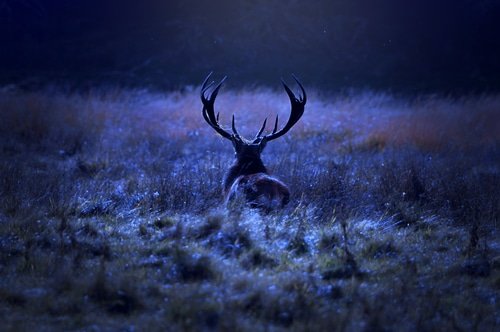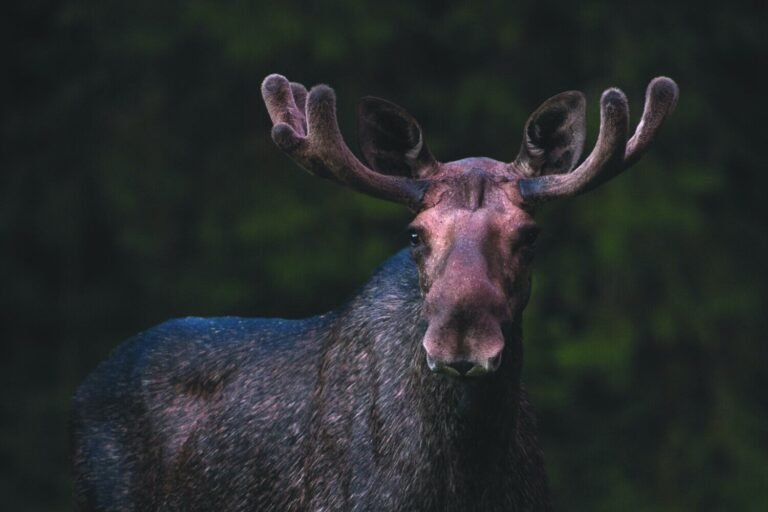When it comes to majestic creatures that roam the vast wilderness, few can rival the awe-inspiring presence of the moose. With their towering antlers, impressive stature, and gentle yet powerful gait, these magnificent animals have captured the imagination of humans throughout history. But what about moose in mythology?
These giant creatures, found in various regions across North America, Europe, and Asia, have become symbolic icons of the untamed beauty of nature. Their sheer size alone evokes a sense of wonder and admiration. The males, known as bulls, can reach heights of up to 7 feet at their shoulders and weigh an astonishing 1500 pounds – a truly remarkable sight!
The Significance of Animals in Mythology
Animals have always held a special place in human mythology. They represent aspects of our natural world, embody deeper meanings, and symbolize various qualities or characteristics that we associate with them. In many ancient cultures, animals were revered as sacred beings whose actions and behaviors were significant for human existence.
From ancient Egyptian depictions of gods with animal heads to Native American stories featuring animal spirits guiding humanity’s path, animals have played pivotal roles in mythologies across the globe. Whether it’s their strength and power like that exhibited by lions or tigers or their gracefulness embodied by creatures such as swans or dolphins, animals often serve as symbolic representations deeply intertwined with our beliefs and understanding of ourselves and our world.
The cultural symbolism attributed to different animals varies widely from one society to another – serving as reflections or extensions of human virtues and vices. In this article examining moose legends within mythology from around the world – we will delve into tales where these marvelous creatures take center stage amidst folklore steeped in mysticism and symbolism.
Through these stories, we glimpse the profound connection between humans and animals, exploring how creatures like the moose have woven their way into the very fabric of our myths and legends. So join us on this captivating journey as we uncover the enigmatic tales surrounding moose in mythology!
Moose in Native American Mythology
Overview of the moose’s role in Native American cultures
The moose holds a significant place in the mythology and cultural symbolism of many Native American tribes. Revered for its majestic presence and formidable strength, the moose represents power, resilience, and wisdom. Native Americans deeply respect the moose as a symbol of balance between humans and nature.
This noble creature is often associated with hunting rituals, where tribes would seek guidance from the spirits of the moose to ensure a successful hunt. Additionally, the moose’s antlers symbolize spiritual growth and regeneration, embodying the cyclical nature of life.
Inuit mythology: The powerful and mystical nature of moose
In Inuit mythology, the moose is considered a powerful and mystical creature. Known as “oomingmak” by the Inuit, this large animal has long captivated their imagination. According to Inuit beliefs, encounters with a moose are considered sacred and auspicious.
It is believed that those who witness or dream about a moose are blessed with good luck and prosperity. The Inuit attribute supernatural abilities to these magnificent creatures, considering them conduits between humans and spirits.
The majestic presence of a moose inspires awe and reverence among Inuit communities.
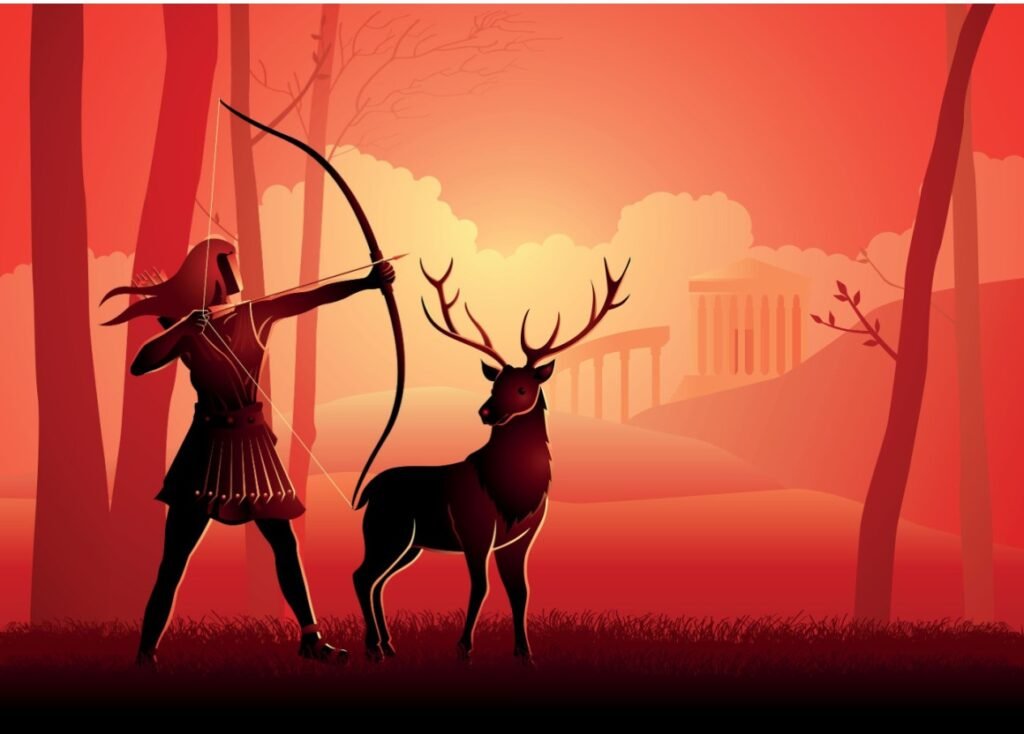
The Moose in Norse Mythology
Introduction to Norse Mythology and its Animal Symbolism
Norse mythology is a rich tapestry of gods, creatures, and epic tales that captivate the imagination. Animals play a significant role in this mythological realm, as they symbolize various traits and embody powerful archetypes. Among these magnificent creatures, the moose holds a notable place—a creature both awe-inspiring and enigmatic. In Norse mythology, animals were believed to possess innate wisdom and supernatural abilities.
They served as messengers between realms, guardians of nature’s secrets, and conduits to the divine. The moose stood out for its strength, gracefulness, and profound cultural symbolism.
Eikthyrnir: The Magical Stag atop Valhalla
One fascinating tale from Norse mythology features Eikthyrnir, a majestic stag with awe-inspiring antlers who reside atop Valhalla—the great hall of Odin where fallen warriors are welcomed into the afterlife. Eikthyrnir’s antlers are said to reach high into the heavens like branches of Yggdrasil—the mythical tree that connects the nine realms.
This ethereal creature was believed to feed on the dew that dripped from Yggdrasil’s leaves, sustaining itself with mystical nourishment that granted it eternal life. Eikthyrnir became an emblem of immortality and resilience among warriors who sought glory in battle—a symbol reminding them of their aspirations beyond mortal existence.
Freyja’s Mighty Moose-Drawn Chariot
The connection between Freyja—goddess of love, beauty, and fertility—and moose runs deep within Norse mythology. It is said that Freyja possessed a chariot unlike any other—a dazzling vehicle adorned with precious gems and pulled by two mighty moose. These towering creatures, with their formidable antlers and graceful strides, symbolized the untamed forces of nature and fertility.
This remarkable chariot became a symbol of Freyja’s power and her ability to command the forces of creation. As she journeyed across the skies, her moose-drawn chariot brought forth life, abundance, and blessings wherever it traversed.
The sight of Freyja and her magnificent moose chariot was believed to be a harbinger of prosperity among the Norse people. In Norse mythology, the moose legends intertwine with notions of strength, immortality, fertility, and divine intervention.
Whether it is Eikthyrnir atop Valhalla or Freyja’s awe-inspiring moose-drawn chariot, these captivating stories showcase the cultural symbolism that this majestic creature embodied in the ancient Norse world. The presence of the moose in such prominent tales reveals its significance as a creature that bridged mortal existence with realms beyond—leaving us in awe of its enduring mythical legacy.
Moose as a Symbolic Creature in Other Cultures’ Folklore
Siberian Shamanism: The Antler’s Spiritual Significance
In the vast and mystical landscapes of Siberia, the moose holds a special place in the cultural symbolism of indigenous communities. According to Siberian shamanism, the majestic antlers of the moose are believed to possess profound spiritual power.
These antlers are revered as conduits between humans and the spirit world. Shamans, respected spiritual leaders within these communities, wear headdresses adorned with moose antlers during sacred rituals and ceremonies.
They believe that by donning these antlered headdresses, they can connect with the wisdom of the moose and access heightened states of consciousness. The antlers symbolize strength, wisdom, and connection to higher realms in Siberian folklore.
Finnish Mythology: Hiisi, The Enigmatic Forest Spirit
Deep within Finnish mythology lies a fascinating tale about Hiisi – a mysterious forest spirit associated with the mighty moose. Hiisi is portrayed as an enigmatic figure dwelling in lush forests where nature thrives abundantly.
Legends depict Hiisi as an elusive guardian of wildlife, particularly moose herds. It is said that if humans venture too close to these sacred creatures without proper respect or intent, Hiisi may cast misfortune upon them or lead them astray within his mystical realm.
However, those who approach with reverence and pure intentions may receive guidance or blessings from this powerful forest spirit. This narrative highlights the awe-inspiring nature of moose and serves as a reminder to honor and protect our natural world.
These rich narratives from Siberian shamanism and Finnish mythology demonstrate how different cultures have assigned symbolic significance to the noble moose throughout history. The deep-rooted beliefs surrounding their antlers in Siberian shamanism reflect a reverence for the connection between humans and the spirit world.
Meanwhile, Hiisi’s guardianship over moose in Finnish mythology emphasizes respecting nature and our place. These cultural interpretations of moose further emphasize their majestic presence in folklore, reminding us that they are not just mere creatures but beings with profound symbolic meaning.
Lesser-Known Facts about Moose in Mythology
The Connection between Canadian First Nations People and Their Reverence for the “Spirit” or “Grandfather” Moose
Within Canadian First Nations cultures, the moose holds a special place of reverence and respect. Many believe that the moose is a sacred animal, embodying the spirit of their ancestors and acting as a link between humanity and the divine. Known as the “spirit” or “grandfather” moose, this majestic creature is seen as a symbol of wisdom, strength, and protection.
It is said that encountering a moose in the wild brings blessings and guidance from the ancestors. This belief has been passed down through generations, with stories and rituals attesting to the deep cultural symbolism of moose in Canadian First Nations mythology.
The Belief Among Some Indigenous Communities
In addition to being revered for its spiritual significance, some indigenous communities hold strong beliefs regarding specific behaviors or traits associated with moose. For instance, it is believed that if you encounter a moose crossing your path while traveling, it symbolizes an imminent change or journey in your life. Furthermore, some legends suggest that observing a lone male bull moose during mating season signifies courage and independence – qualities that are highly valued within these communities.
Conclusion
As we have explored various aspects of moose in mythology, it becomes evident that this majestic creature holds profound cultural significance across different cultures worldwide. From Native American tribes to Norse mythology to various indigenous communities today, the moose continues to captivate our imaginations with its power and grace.
Whether seen as a spiritual guide or an embodiment of strength and wisdom, these legends remind us of our deep connection to nature and how animals can serve as symbols of inspiration in our lives. So, let us embrace these timeless tales with open hearts and allow the moose to guide us toward a future filled with reverence for the natural world.

